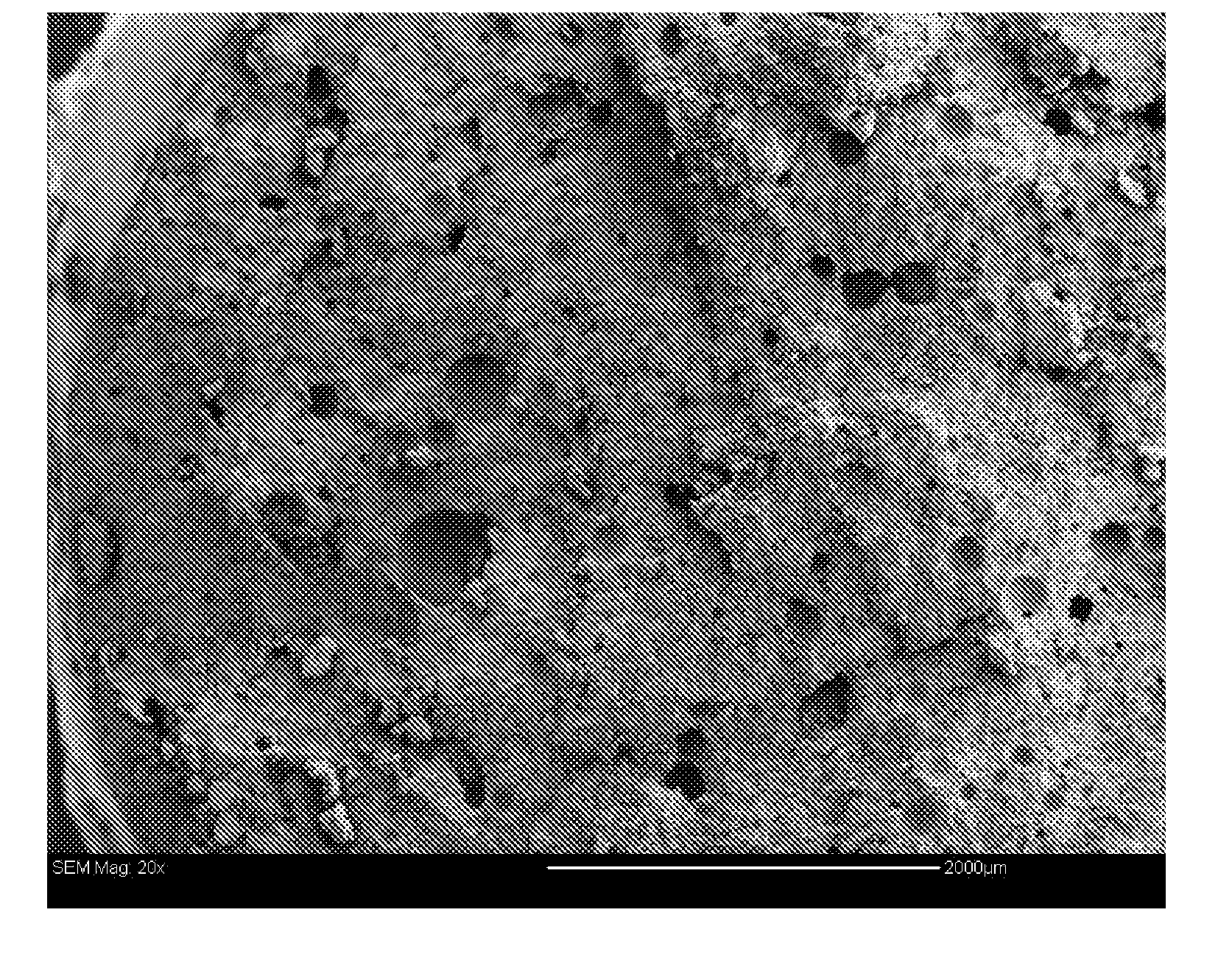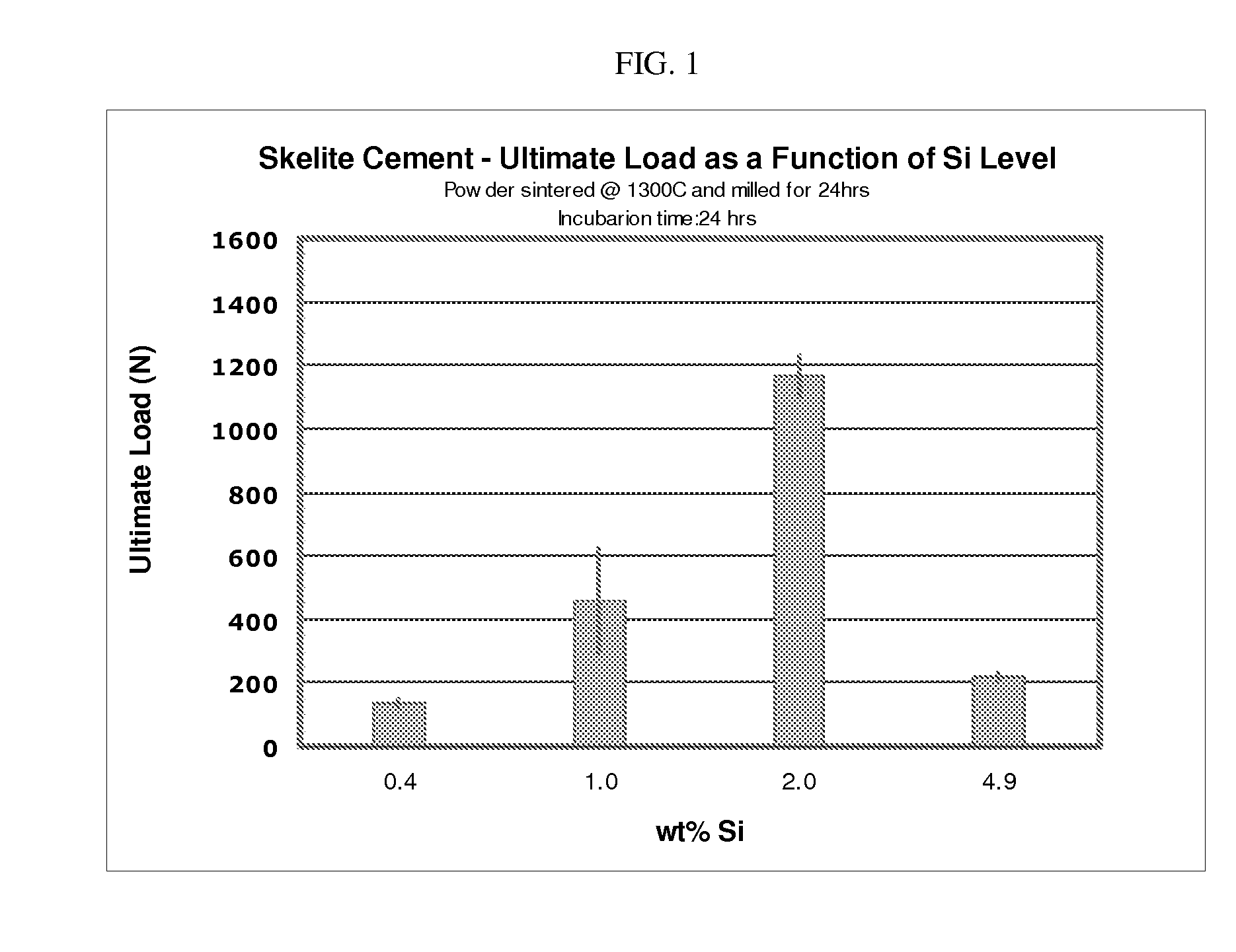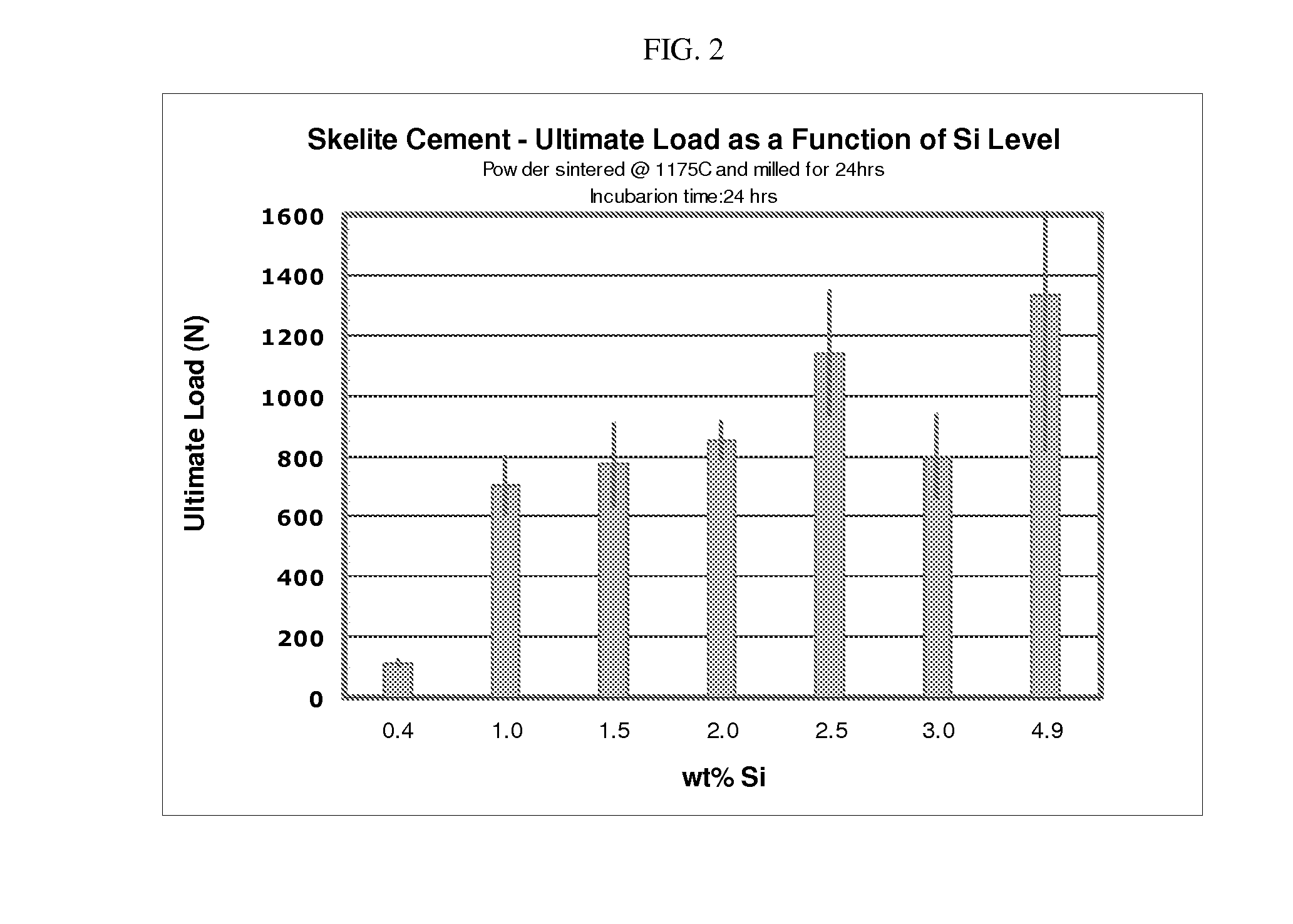Biphasic calcium phosphate cement for drug delivery
a calcium phosphate cement and biphasic technology, applied in the field of biomineral-based cements, can solve the problems of compromising patient outcomes, lack of large quantities of bone, and unsatisfactory options
- Summary
- Abstract
- Description
- Claims
- Application Information
AI Technical Summary
Benefits of technology
Problems solved by technology
Method used
Image
Examples
example 1
Preparation of a Biphasic Calcium Phosphate Cement
[0083]A biphasic calcium phosphate cement precursor was initiated through a wet chemistry process. An ammoniated ammonium phosphate solution was added drop wise to an aqueous solution of calcium nitrate to form a calcium phosphate (Ca—P) precipitate which was subsequently aged for 22 hours under conditions of agitation to ensure the reaction had progressed to completion. In order to enhance the biological activity of the final biomineral composition, silicon was added as a finely dispersed fumed silica. The silica doped Ca—P precipitate was subsequently centrifuged, decanted and spray dried. The resulting silicon-stabilized calcium phosphate powder (U.S. Pat. No. 6,323,146) was calcined in alumina crucibles to remove water and residual precursor reactants.
[0084]In order to form a cement, the above biomineral was mixed with a buffer solution (Na2HPO4). In addition to the inclusion of the buffer solution, a soluble biopolymer was added...
example 2
Optimizing the Mechanical Performance of the Biphasic Calcium Phosphate Cement
[0089]An evaluation of the critical parameters influencing the properties of the cement was undertaken as a means to select the cement formulation that maximizes performance. A series of cements were prepared according to the procedure outlined in Example 1; however, certain parameters were adjusted in the pursuit of optimized performance.
[0090]As evidenced in FIGS. 1 and 2, the ultimate load of the biphasic calcium phosphate cement (following the setting process) is dependent upon the wt % of silicon added during the manufacturing of the biomineral precursor.
[0091]FIG. 3 indicates that the ultimate load of the biphasic calcium phosphate cement is influenced by the phase mixture of the precursor Ca—P powder used for production of the biomineral phase.
[0092]The use of different thermal profiles in the calcination / sintering of the precursor to the biomineral phase also influences mechanical performance, as n...
example 3
Optimizing the Mechanical Performance of a Biphasic Calcium Phosphate Cement
[0093]An evaluation of the critical parameters influencing the properties of the cement in combination with the biopolymer network was undertaken to assess the effect of different ratios of mixture components on mechanical performance and the ability to attain an interconnected network.
[0094]A series of cements containing biopolymer particles was prepared and evaluated for ultimate load and architecture.
[0095]FIG. 5 is an SEM of a fracture face through the cement that illustrates the formation of a network of pores in the set cement after 24 hours of incubation in simulated biological fluids (SBF) at 37C.
[0096]The influence of the biopolymer network on the ultimate load of the composition is highlighted in FIG. 6. As the level of the biopolymer increases, the cement is unable to form a rigid structure and the composition has minimal structural performance. While there is no specific strength requirement for ...
PUM
| Property | Measurement | Unit |
|---|---|---|
| Temperature | aaaaa | aaaaa |
| Temperature | aaaaa | aaaaa |
| Fraction | aaaaa | aaaaa |
Abstract
Description
Claims
Application Information
 Login to View More
Login to View More - R&D
- Intellectual Property
- Life Sciences
- Materials
- Tech Scout
- Unparalleled Data Quality
- Higher Quality Content
- 60% Fewer Hallucinations
Browse by: Latest US Patents, China's latest patents, Technical Efficacy Thesaurus, Application Domain, Technology Topic, Popular Technical Reports.
© 2025 PatSnap. All rights reserved.Legal|Privacy policy|Modern Slavery Act Transparency Statement|Sitemap|About US| Contact US: help@patsnap.com



